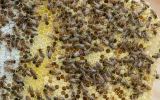What Happens If The Queen Bee Dies In A Hive?
As with most living organisms, the queen bee also reaches the end of its life. And being the center of peace and order in a beehive, the queen bee must be replaced when it dies. So, what happens if the queen bee dies in a hive, and how is she replaced? Let’s find out.
The queen bee’s death may be due to disease, old age, or being killed by accident. When this happens, the colony falls into temporary disarray. However, the worker bees work immediately to replace the queen in order to avoid chaos. The workers begin a process of emergency queen rearing.
Rearing a new queen should be done within the shortest time possible, or the hive will begin to weaken, be queen-less, and fall into chaos. Thankfully, the colony will do everything necessary to make the ecosystem thrive in the hive.
Summary
- The hive will immediately start working to replace the queen. If they fail, the hive will slowly die off.
- Each hive can only have one queen. When multiple arise simultaneously, they will fight to the death.
- Virgin queens will take half of the hive and swarm until their scouts find them a new home.
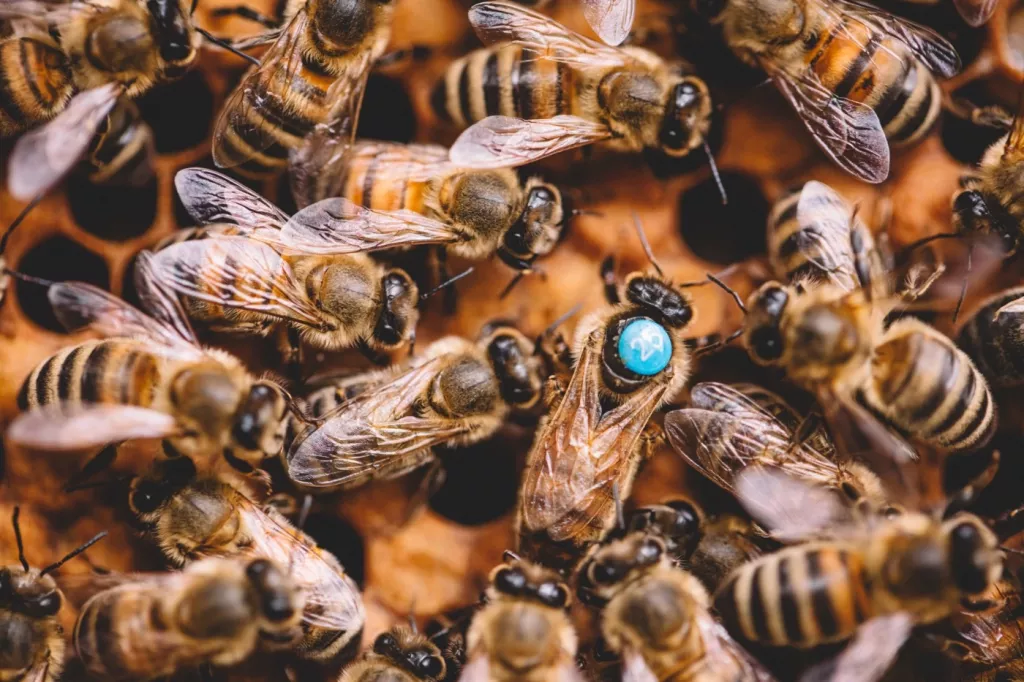
On this page:
What Happens to A Hive If There is No Queen Bee?
When the queen bee dies, the pheromones also fade with her. According to NCBI, pheromones are chemical substances that are secreted outside the body that send signals from one individual to another of the same species and trigger a response in the individual receiving those signals, such as a hormonal change or specific behavior.
Good thing that worker bees can sense the absence of this chemical scent when the queen dies, and it signals them to work immediately to replace the queen in order to avoid chaos and to gain back order in the hive.
The absence of pheromones means the worker bees can become active and begin to lay eggs, and this means that the highly efficient, tightly controlled system in the hive breaks down. This is the time for worker bees to work together to raise a new queen.
The queen bee’s role in a hive is incredibly crucial, and that is to secure the colony’s continued growth by laying eggs throughout her life. She is literally the center of the cell or a nucleus that’s responsible for a well-coordinated system of activities in the hive. Without the queen, everything in a hive is ruined.
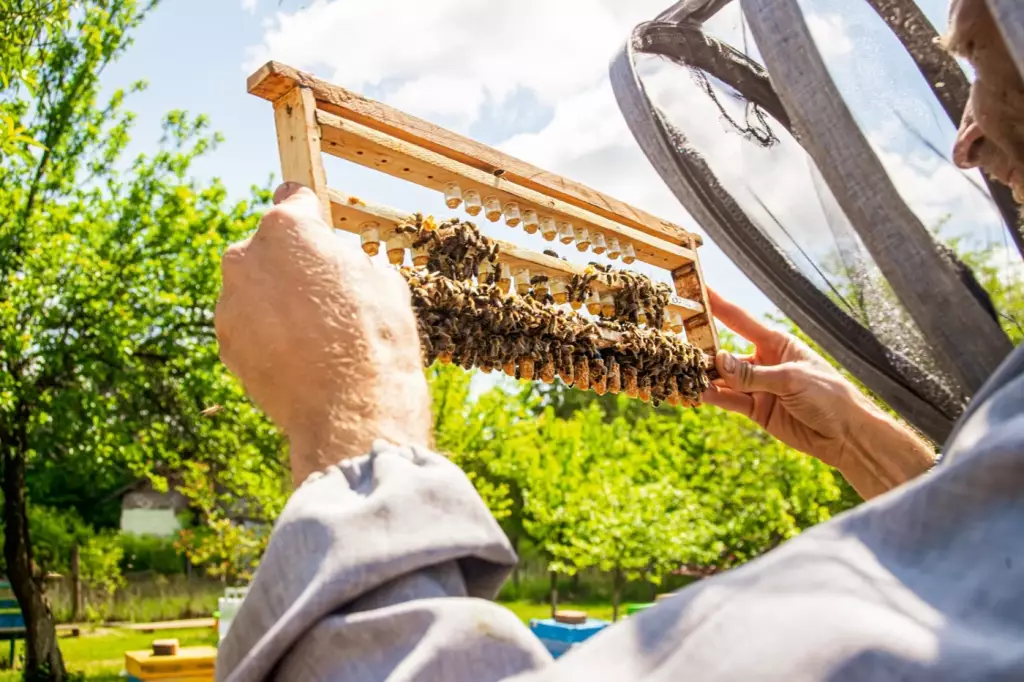
The queen bee is the largest type of you can find in a hive. It is also the longest-living bee that has an average lifespan of six years.
While alive, the queen releases chemical signals called pheromones that hinder the rest of the female bees from laying eggs by stopping their ovaries from functioning. This is why only one queen bee rules in any beehive. It is the only female bee that lays eggs for the hive to survive.
Who Takes Over the Hive When the Queen Bee Dies?
A new virgin queen bee should take over the hive. The process of replacing the old queen with a new one is called supersedure. In this process, the worker bees select about 10 to 20 young female larvae that are less than three days old. They build larger vertical cells to house these young female larvae and give them special treatment and attention. The fertilized eggs take about three days to hatch in the queen-size rearing chambers.
Typically, these eggs would hatch into female larvae that would eventually become workers. The only difference between a worker bee and a queen is how they are fed during the maturation process. Workers feed prospective queens royal jelly for their entire lives. But they feed worker bees royal jelly for the first two days of their larval stage.
Royal jelly is a special food that turns the larva into a fertile queen rather than a sterile worker. A fertile queen has fully developed ovaries that are needed to lay eggs.
Of the selected larvae that are potential queen bees, the first to emerge from her cell will kill the other developing queens in their cells before they hatch. If two queens emerge simultaneously, they will fight to the death, since there can only be one new queen.
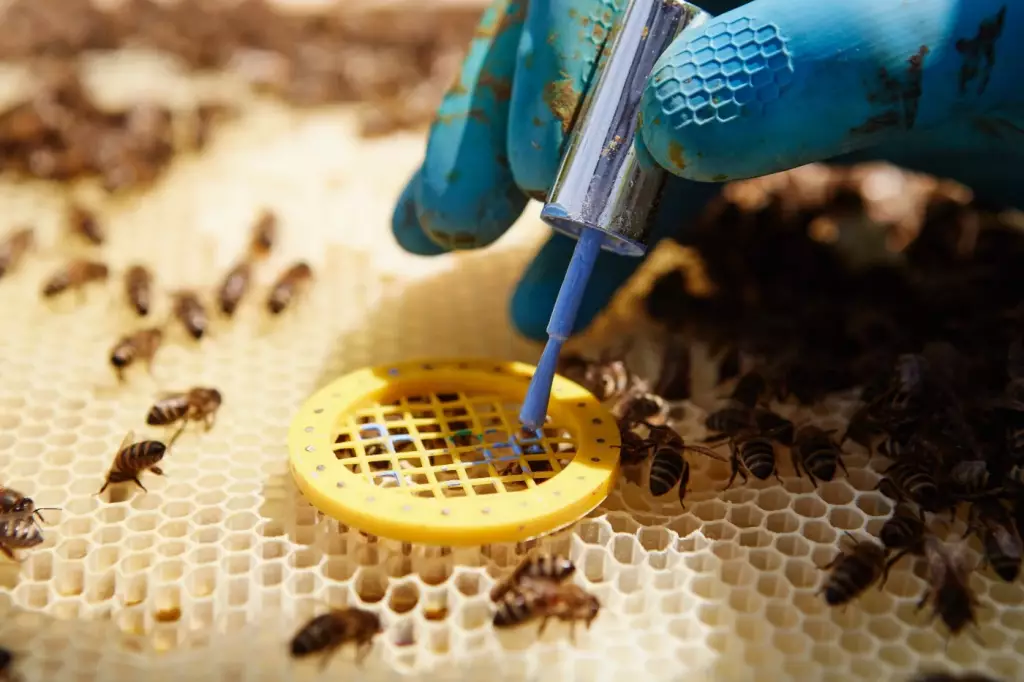
After about a week, this is how the new queen begins her reign. She goes on several flights to mate in mid-air with as many as 20 drones. The goal here is to saturate her spermatheca with semen. The male bees or drones die soon after giving their sperm to the queen bee.
The queen will return to the hive and will have to wait for 3 to 5 days to start laying her eggs. Being the only fertile bee in the hive, she can produce up to 2,000 eggs per day in her entire lifespan. However, the amount and pace at which she lays eggs depend on the weather, food availability, and the habits of her colony.
The worker bees protect and keep an eye on the queen bee. They regulate her temperature to make sure that she copes with her job of laying eggs. If she doesn’t lay enough eggs, the workers will be forced to start a supersedure.
After laying her eggs, the queen bee rarely leaves the colony and will never mate again until she dies. She has stored enough sperm to fertilize her eggs for the rest of her life. The fertilized eggs will become a female, which is either a worker bee or a future queen bee. On the other hand, the unfertilized eggs will be male drone bees.
The royal succession is the same if the queen bee dies of old age. The only difference is that, if she’s still alive, she herself lays the queen eggs or her potential successors into the prepared cells. An aging queen bee produces fewer pheromones and lays eggs in less organized patterns. This poor performance triggers the action of worker bees to replace her. After the supersedure, the old queen is killed.
Where do Bees Go If the Queen Dies?
When their queen dies, the bees go swarming. Swarming of bees can occur due to the loss of their queen, or an aging queen, or may be due to space constrictions in the hive.
Since the queen bee can lay thousands of eggs a day, the space in the hive can become constrained. When this happens, the mature queen leaves the colony, bringing with her half of the workers. They then find a place to establish a new colony. The remaining half of the colony stays in the hive with a new queen and proceeds with their normal lives.
If the queen dies or is aging and has decreased egg-laying abilities, some of the worker bees decide to exit the colony with a virgin queen. They then reproduce a new colony in a new place that the scout bees find suitable for hive growth.
To prepare for swarming, the worker bees build numerous cells along the bottom of the comb to house the new queens. The bees then limit or stop their fieldwork as they wait for a new queen to emerge.
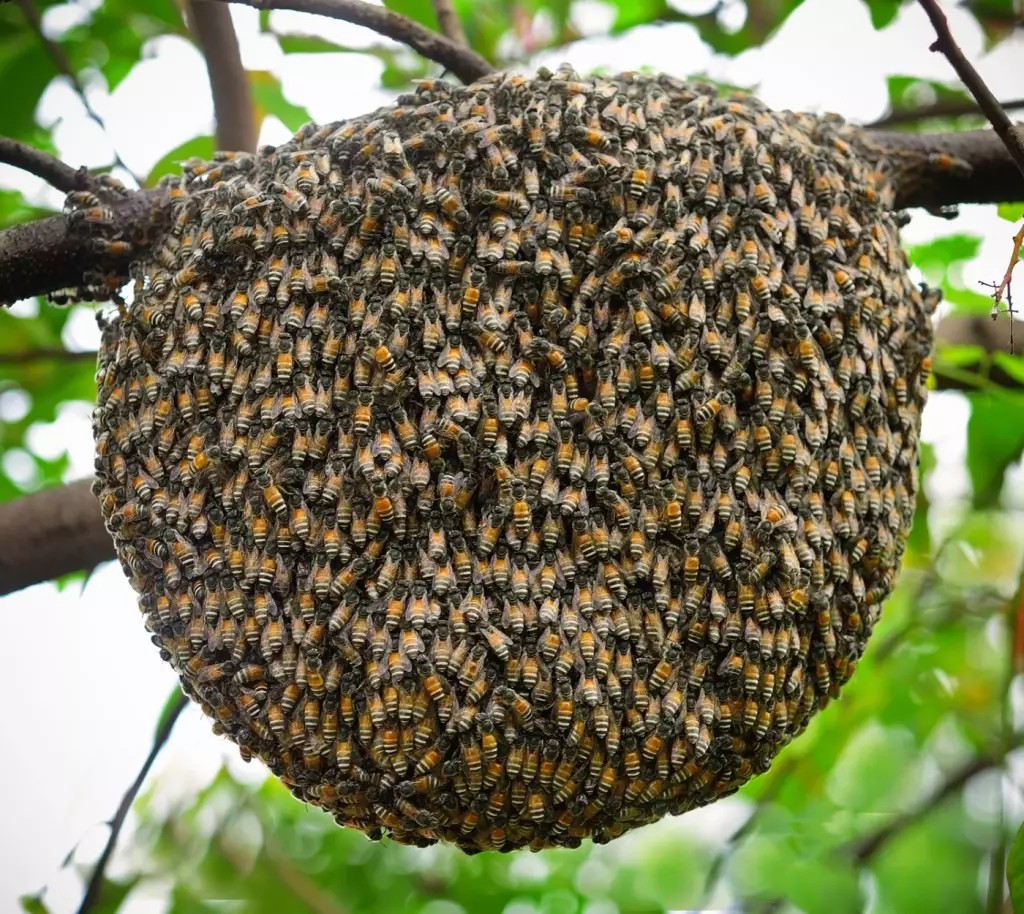
When a virgin queen emerges, she and half of the colony take much of the honey and leave the hive to search for a new place to live. The swarm bees, or the bees the new queen left with, gather on a bush or a tree limb to wait for the scout bees to determine their new home.
Other new queens will lead a swarm of bees that will continue leaving the hive within a few days of each other. Some bees stay in the old hive, although the colony may be too weak to survive.
How do Bees React When the Queen Dies?
Sometimes colonies do not succeed in rearing a new queen bee. A beehive with no queen for too long cannot survive and will make the worker bees become highly agitated and aggressive. In this case, the worker bee will start to lay eggs that are unfertilized, which will all hatch to become drones (male bees).
Because drones do not go foraging for food and don’t do any work or help with any duties, the colony becomes unproductive and their stress levels increase. And since there’s not enough food for them, they will be too weak to fight pests and diseases. The only way out here is for a beekeeper to intervene by introducing a new queen bee from outside the hive. Otherwise, the colony will have to suffer a halt after a couple of months.
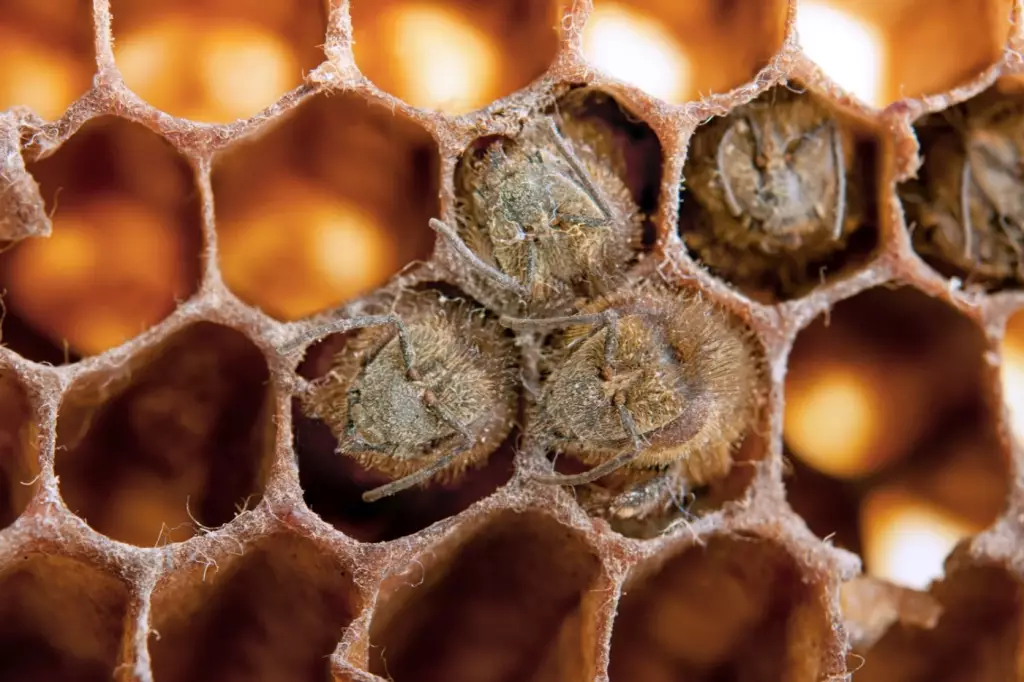
Your role as a beekeeper
Some beekeepers have this practice of replacing the queen every one or two years to keep the colony strong and steady. If a hive needs help with its queen, you can intervene by bringing in a new queen to help them survive.
Sometimes a beekeeper can kill the queen by accident during maintenance or inspection. In this case, you can either purchase them a new queen or let the colony raise a new queen on their own. The better option would be to let them rear on their own because they don’t always accept a new queen introduced to them.



